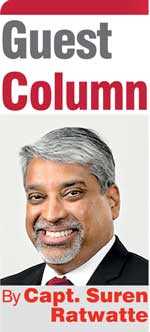Friday Apr 26, 2024
Friday Apr 26, 2024
Monday, 22 July 2019 00:00 - - {{hitsCtrl.values.hits}}
The visionary engineer, pilot and manager who led Airbus to some its most significant decisions, passed away last month.
Beteille, who was the head of French aircraft manufacturer Sud Aviation’s flight testing section, was made technical director of the infant Airbus consortium when it was formed in 1970. He was largely responsible for making English the working language of Airbus and for recognising that the products of the new company must be acceptable for the huge North American market. He drove that program when he was made General Manager of Airbus in 1975. 
The size of the fuselage of the first Airbus airliner, designated the A300, was influenced by Beteille who saw the need for accommodating freight as well as passenger baggage in such a large aircraft. To allow for optimum cargo space, the underbelly hold was designed to hold two LD3 containers back to back. The resulting cross-section of 222 inches became the defining size of successive generations of Airbus aircraft, including the A330 and 340 series flown by our national carrier.
The sale of 23 A300 aircraft to Eastern Airlines, at the time the dominant airline on the east coast of the USA, marked a turning point in the fortunes of the European challenge to US hegemony in building airliners. Since that first landmark sale, largely the work of Beteille’s team, hundreds of Airbus machines have been to airlines in North America.
The decisive move in the game however, was Beteille’s decision to build a radical new smaller aircraft and compete in the ‘narrow-body’ market, then dominated by the Boeing B737 and Douglas DC-9. In designing the Airbus 320, the European’s decided to maximise the use of new technology.
This included not only the pioneering ‘fly by wire’ digital flight control systems (which did away with the traditional steel cables and pulleys that aircraft had at the time) but also electronically driven system monitoring, checklists and failure analysis, known as ECAM (Electronic Centralised Aircraft Monitor).
The digital revolution that was unleashed by the A320 completely rewrote the way that aircraft were designed and how pilots flew them, with large control wheels being replaced by tiny side sticks and a table in front of each pilot.
Part of this dramatic change was driven by a need to differentiate the Airbus 320 from the existing competition. By replacing many of the paper checklists and handbooks that were the norm at the time, Airbus changed not only the entire airline industry, but also how pilots interacted with the aircraft.
So successful did the concept of the A320 become, that subsequent Airbus models followed the same path, allowing seamless transition between smaller and larger aircraft in the stable for the pilots. This led to huge savings for the airlines. Boeing was forced to follow suit with digital systems for the 777 wide-body family which was launched a few years later. As we have seen, Boeing’s decision to not build a digital narrow-body aircraft as well, has cost them dearly in the recent past.
By the time Beteille retired as its President in 1985, Airbus was established as a genuine player in the high stakes aircraft manufacturing space. He was described as the ‘Father of Airbus’ and the A350 final assembly building was named after him in 2012.
He passed away peacefully at the age of 97 on 14 June, with his beloved company firmly established as the dominant aircraft manufacturer in the world. A legacy the great visionary would be very proud of.